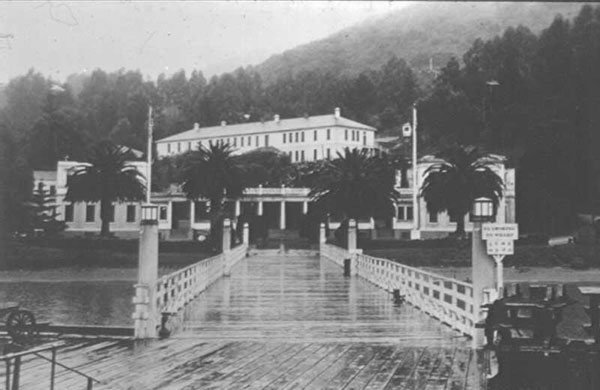
The American Sephardi Federation recently conducted a survey aimed at finding archival collections related to Sephardic, Mizrahi and Bukharian Jews held in synagogues, state archives, cultural organizations, or by individuals in six Mid-Atlantic and New England states.
They learned that somewhere in New Jersey there is a collector who owns a rich collection of correspondence—about 800 pieces, mostly written in Ladino—that originated in Vienna and the Ottoman Empire between 1840 and 1940. Almost all of the correspondence comes from merchants, but not all of it deals exclusively with business matters. Some is about family issues. The collector’s name has not been made public.
One of the objectives of the survey was to set the basis for collaboration with institutions on projects that will increase the accessibility of key documents about those communities. The history of Sephardic and Mizrahi Jews in the United States hasn’t been well understood, according to Randy Belinfante, librarian at the ASF’s National Sephardic Library.
“American Jews, in general, are unaware of Sephardic history,” he said. “Even the American Historical Society, which has a large collection of Jewish material, is unfamiliar with Sephardim, as are many Jews in New York City, where a large community of Syrian Jews live.”
Sephardic Jews spread all over the Mediterranean basin and through parts of western Europe, particularly Portugal and Holland, after their expulsion from Spain in 1492. They have been part of American history since colonial times. Twenty-three Sephardic Jews fled Recife, Brazil, in 1654 and landed in New Amsterdam, now New York City.
Mizrahi Jews, who trace their origins to such Middle Eastern countries as Syria, Iran, Iraq, and Lebanon, started migrating to the United States at the beginning of the 20th century. The only institution that holds items related to Bukharian Jews, who originated in Central Asia, is the Bukharian Museum in Elmhurst, Queens.
 According to Ehrlich, ASF sent out 300 surveys to institutions in New Jersey, New York, Connecticut, Pennsylvania, Massachusetts, and Rhode Island between February and May 2012. The surveys asked the recipients to identify the types of archival material they hold; 104 surveys were filled out and sent back. ASF also got in touch with the institutions by phone, email, and mail, and staffers visited some of them. In New Jersey, 13 institutions were contacted.
According to Ehrlich, ASF sent out 300 surveys to institutions in New Jersey, New York, Connecticut, Pennsylvania, Massachusetts, and Rhode Island between February and May 2012. The surveys asked the recipients to identify the types of archival material they hold; 104 surveys were filled out and sent back. ASF also got in touch with the institutions by phone, email, and mail, and staffers visited some of them. In New Jersey, 13 institutions were contacted.
The ASF learned that Ahavath Torah does not have any archival materials, but Congregation Etz Ahaim has by far the richest archival material of all synagogues and institutions in the state, and it has given some of it to the Jewish Historical Society of Central Jersey. The holdings include minutes, some in Ladino, dating back to 1933, as well as programs, photographs, bylaws, and a cookbook titled Comer es Bueno (Eating is Good). Other material, including records from 1935 to the present, which are kept at the synagogue.
The state that yielded the most collections was New York, where there are six private collectors. The Yeshiva University Museum in Manhattan has one of the richest collections, with material in English, Ladino, and Hebrew, dated between the early 1500’s and the mid-twentieth century.
Joy Zacharia Appelbaum, former executive director of the International Sephardic Education Foundation and former director of public relations for the Sephardic Home for the Aged, donated several items to the museum. “I donated my library to many Jewish organizations for the perpetuation—not just preservation—of Sephardic culture,” she said.
The survey also asked for donations of oral stories from Sephardic Jews, but “there was not much fresh material because congregations and community groups had already recorded stories.
The mission of the ASF is to promote and preserve the spiritual, historical, cultural and social traditions of all Sephardic communities as an integral part of Jewish heritage. They represent the heritage of all Sephardim from the Iberian Peninsula and the Balkans, to the Jews of North Africa and Muslim lands including Iraq, Iran, Syria, Turkey, Yemen, Ethiopia and Bukharian Jews.
 The ASF was officially organized in 1973. Sephardic House was founded in 1978. In 2002, the American Sephardi Federation and Sephardic House, then sharing space at the Center for Jewish History in New York City, merged in order to create one stronger organization to ensure the continuation of the Sephardic legacy, heritage and traditions through educational programs and archival preservation and to advocate for Sephardic communities around the world and foster strong lines of communication with American Sephardim. They celebrate the contributions of Sephardic Jews to America; strengthen Sephardic interaction with other American Jewish communal organizations; educate others about the legacy and traditions of the Sephardic people and further awareness of the former existence of large Jewish communities in the Muslim and Arab world.
The ASF was officially organized in 1973. Sephardic House was founded in 1978. In 2002, the American Sephardi Federation and Sephardic House, then sharing space at the Center for Jewish History in New York City, merged in order to create one stronger organization to ensure the continuation of the Sephardic legacy, heritage and traditions through educational programs and archival preservation and to advocate for Sephardic communities around the world and foster strong lines of communication with American Sephardim. They celebrate the contributions of Sephardic Jews to America; strengthen Sephardic interaction with other American Jewish communal organizations; educate others about the legacy and traditions of the Sephardic people and further awareness of the former existence of large Jewish communities in the Muslim and Arab world.
The organization would love to include personal stories of Sephardi/Mizrahi immigration on their website, where you can also view the survey results: sephardicarchives.org.



